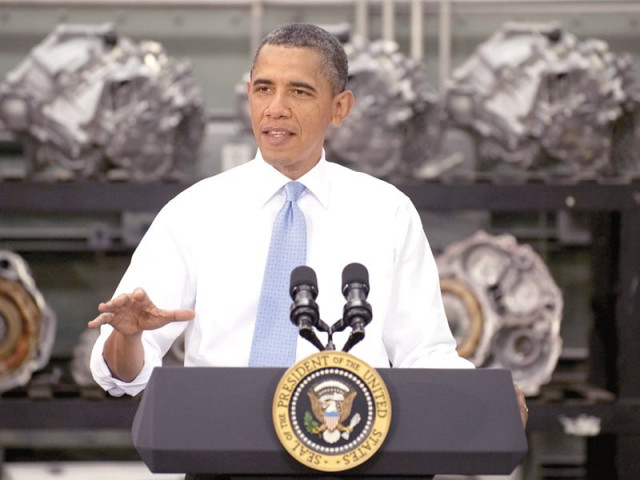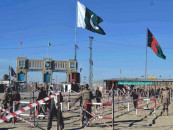Obama to reveal Afghan troop decision tomorrow
US president to map out an endgame for a 10-year war that has exacted a fearsome human and financial toll.

Two administration officials said Obama would reveal the fruit of his deliberations on a pullback due to begin next month, in a pivotal moment for US war strategy and his own political prospects ahead of his 2012 reelection bid.
The president must decide the pace and size of reductions to a 30,000-strong troop surge which he ordered in December 2009, a deployment which brought the US garrison to 100,000 soldiers.
Some analysts also expect him to chart a glide path of future withdrawals which will lead up to the planned Afghan security takeover in 2014.
Obama will also be expected to explain to Americans that his surge has wrought slow, but significant progress, particularly in southern Afghanistan against the Taliban and foreshadow operations in key eastern districts.
White House officials also say that since Obama came to office, and poured new resources into a war that they say was underresourced by George W Bush's administration, there has been significant progress against al Qaeda.
Obama spokesman Jay Carney had said earlier on Monday that the president was still finalising his deliberations and had not yet made a decision.
In December 2009, Obama laid out a new war strategy designed to disrupt, dismantle and defeat al Qaeda, break the momentum of the Taliban and to offer the Afghan government space to move towards a security takeover.
"We have made significant progress towards achieving those goals," White House spokesman Carney said.
"Obviously, the most sensational and significant data point in that progress is the elimination of Osama bin Laden," he said.
"But there has been enormous progress in disrupting and dismantling al Qaeda in the Afghanistan-Pakistan region beyond and below Osama bin Laden."
Obama will be operating on shifting political ground however, with growing demands in Congress for significant troop withdrawals and mounting public disquiet with a war launched after the September 11 attacks in 2001.
In a CNN/Opinion Research poll published this month, 62 per cent of respondents opposed the war in Afghanistan in which 1629 American soldiers alone have been killed, according to the website iCasualties.org.
War skeptics argue meanwhile that the just less than $10 billion a month cost of the war is unsustainable while the United States struggles with its huge debt burden.
Outbursts critical of US troops as "occupiers" by President Hamid Karzai have fueled skepticism in Washington over the Afghan government.
And the testy US anti-terror alliance with Islamabad was pushed close to breaking point by the US raid which killed Bin Laden on Pakistani soil in May.
Some Pentagon sources have pushed for a cut of only 5,000 or so troops.
But some key players on Capitol Hill want a much larger withdrawal: key Senator Carl Levin recommended 15,000 soldiers be brought home this year.
The National Journal reported that war commander General David Petraeus wanted to wait until the end of 2012 to bring all surge troops home.
Petraeus's timetable would see one brigade combat team of 5,000 troops back home by the end of this year, and another by next spring.
That would allow a portion of surge forces to fight through the next two warm weather fighting seasons.
The decision on withdrawals comes as the United States has opened a fragile process of outreach to the Taliban, which cautious officials have said is only preliminary in nature.
Backers of the surge have said that the Taliban will only countenance serious reconciliation talks if the group's commanders feel they are under pressure from a strong US military footprint in Afghanistan.
US Defense Secretary Robert Gates, typically cautious about pulling out of Afghanistan too rapidly, did however appear to signal some flexibility on troop numbers on Sunday.
"Whatever decision he makes we will have a significant number of troops remaining in Afghanistan," he told CNN, while adding in a nod to domestic pressure on Obama: "The drawdown must be politically credible here at home."



















COMMENTS
Comments are moderated and generally will be posted if they are on-topic and not abusive.
For more information, please see our Comments FAQ